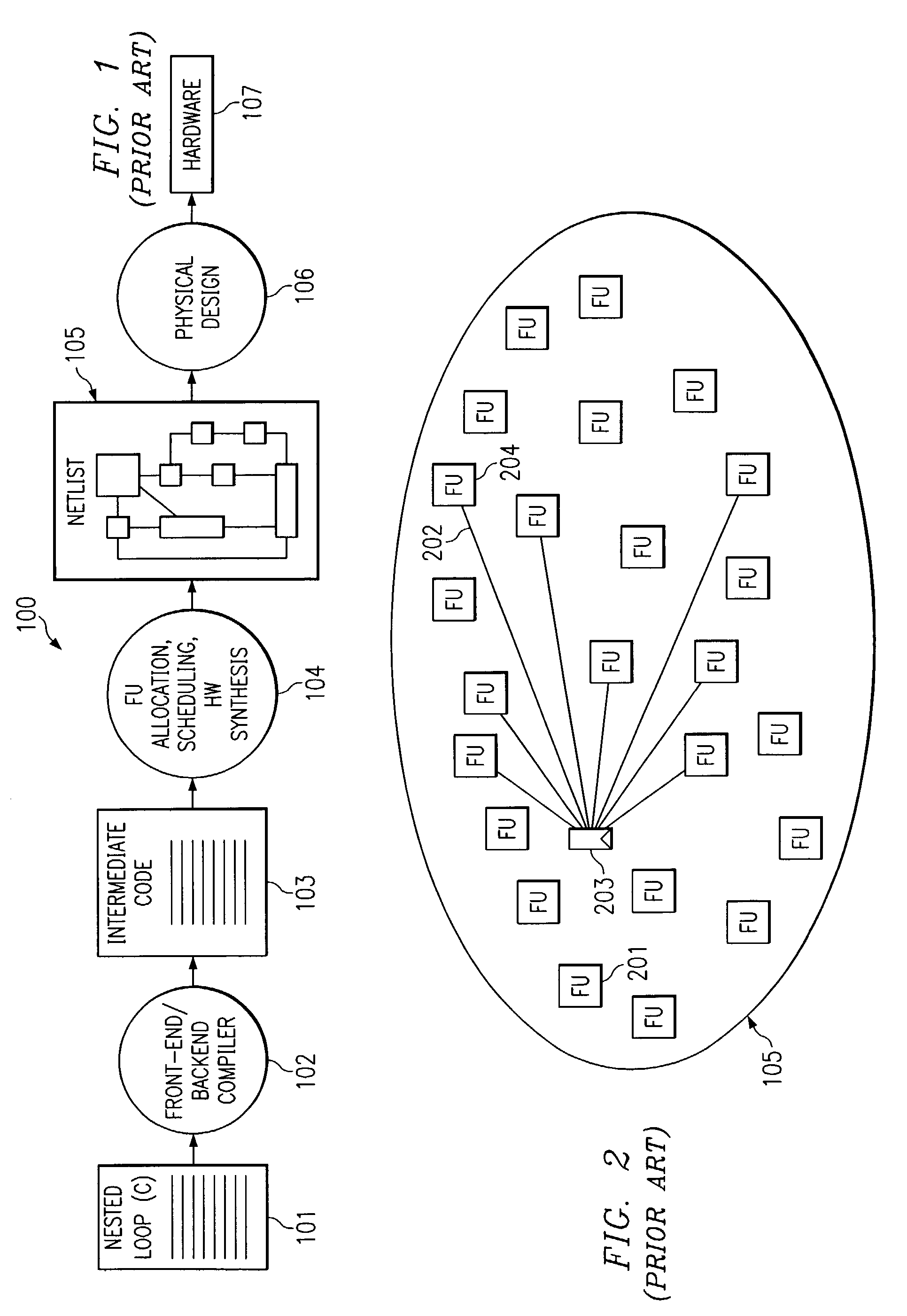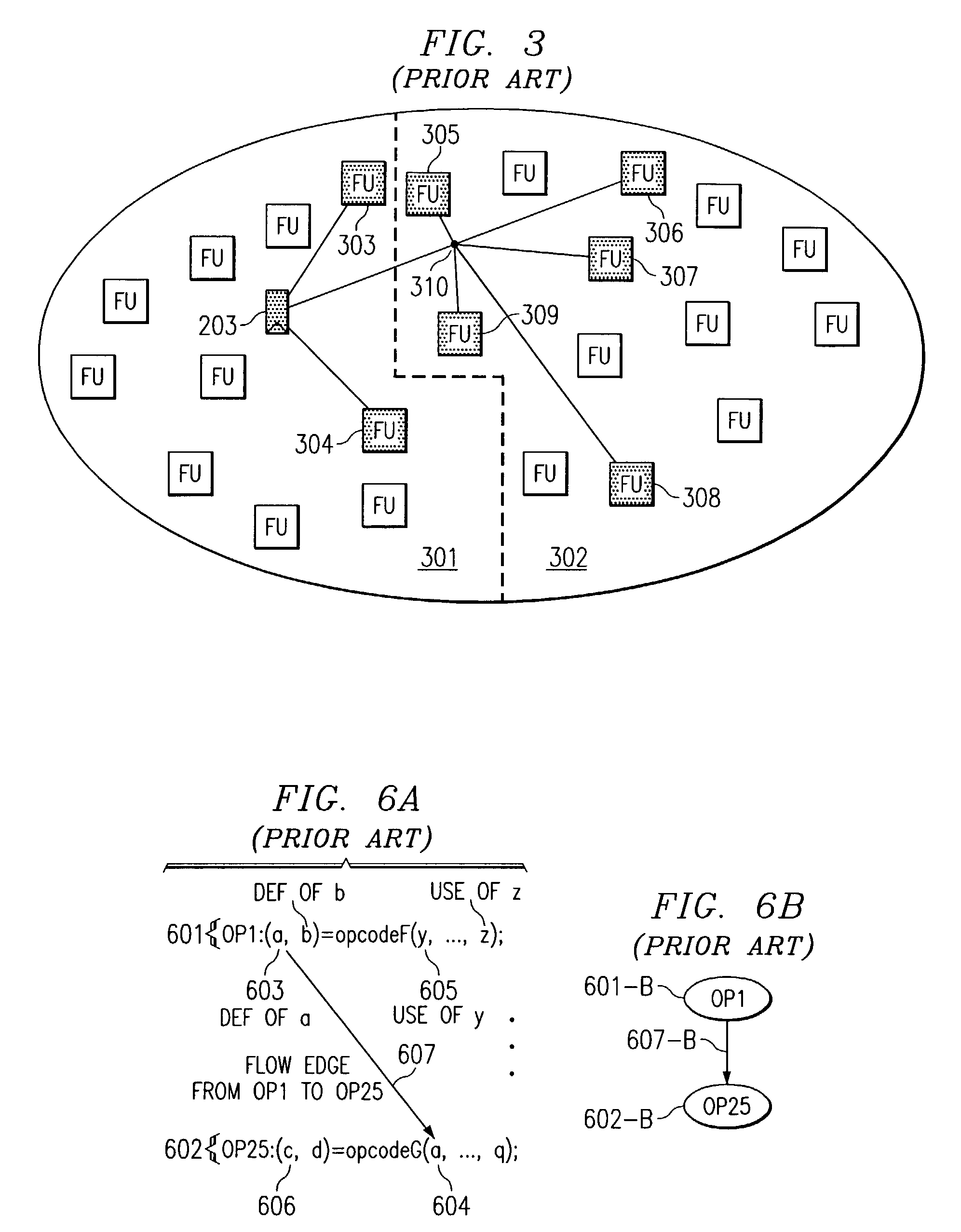System and method for reducing wire delay or congestion during synthesis of hardware solvers
a hardware solver and delay technology, applied in the field of computer systems, can solve the problems of delay of any register to register path, inability to know the delay of wires, and time-consuming processing of nested loop codes
- Summary
- Abstract
- Description
- Claims
- Application Information
AI Technical Summary
Benefits of technology
Problems solved by technology
Method used
Image
Examples
Embodiment Construction
[0032]An embodiment of the invention is a method for handling routing delay and / or congestion during the automatic synthesis of hardware solvers prior to backend physical design. An embodiment of the invention modifies high-level synthesis to generate a netlist for the logical device that is more amenable to successful physical design and reduces wire delay and / or congestion. Successful physical design involves meeting area and timing requirements within a target technology, such as FPGAs or standard cells. Existing design automation methods handle wire delay by over-designing the hardware solver in order to leave room for wire delay. The amount of the clock period that is left “on the table” for wire delay is called the wiring slack, routing slack, or just slack. The problem is that there is a large variability of wire delay from circuit to circuit, and predicting this can be difficult since the delay of each wire depends on the placement of components and the contention for routin...
PUM
 Login to View More
Login to View More Abstract
Description
Claims
Application Information
 Login to View More
Login to View More - R&D
- Intellectual Property
- Life Sciences
- Materials
- Tech Scout
- Unparalleled Data Quality
- Higher Quality Content
- 60% Fewer Hallucinations
Browse by: Latest US Patents, China's latest patents, Technical Efficacy Thesaurus, Application Domain, Technology Topic, Popular Technical Reports.
© 2025 PatSnap. All rights reserved.Legal|Privacy policy|Modern Slavery Act Transparency Statement|Sitemap|About US| Contact US: help@patsnap.com



